Wednesday, 18 July 2007
Distance 31 km
Duration 5 hours 50 minutes
Ascent 151 m, descent 313 m
Map 57 of the TOP100 blue series (now superseded)
Map 56 of the TOP100 blue series (now superseded)
Map 47 of the TOP100 blue series (now superseded)
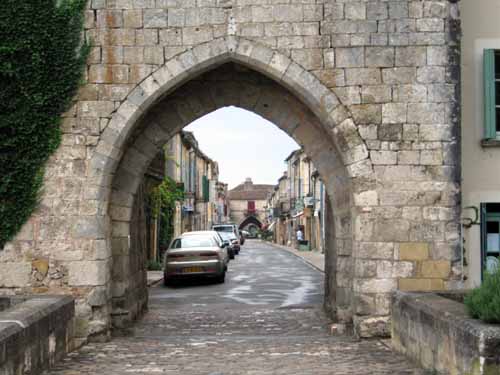
Perhaps because of the unnatural comfort of our surroundings, we slept in until 6:20, but with fewer packing duties we were able to gulp down some muesli and leave at the usual time of 6:50. As our hostess had shown us, we crept out of the front door, locked it behind us and dropped the key into a potted rosebush beside the entrance.
The narrow streets were already alive, with many of the shops open, but we did not linger, as we had 16 km to cover before morning coffee. The only reasonable way was along the road (the D660), and at first it was very quiet, although the traffic increased as we went along.
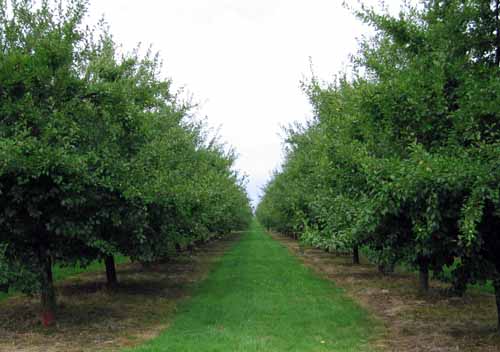
The countryside, carpeted with crops, was a picture of abundance. We saw a deer spring out of a wheat field and into a copse, and further on a bent old man was repairing a stone wall with great skill, choosing each stone carefully to fit, without mortar.
It began to rain, at first just drizzle but then a couple of showers too heavy to ignore, so we brought out our plastic ponchos for a while.
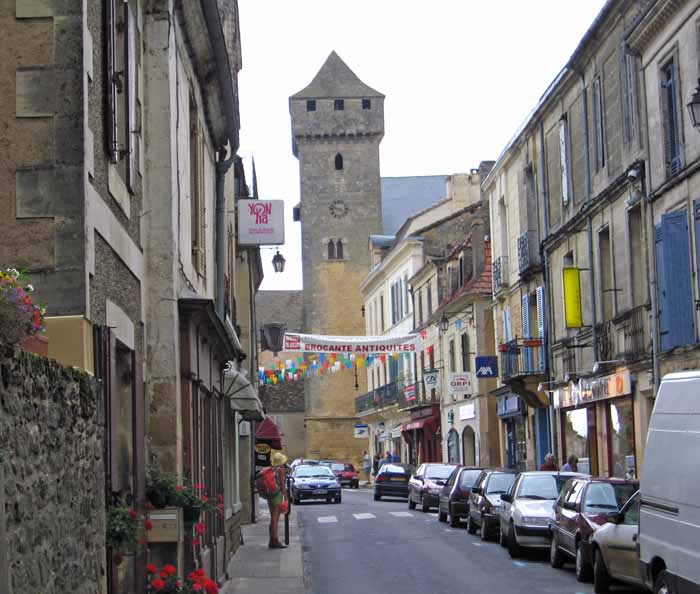
As we approached Beaumont-du-Périgord, we passed a prune orchard stretching into the distance on both sides of the road, heavy with green fruit.
The entry into the village was down a narrow street with the oddly-shaped fortified tower of the church at the end.
It was 10 o’clock when we sat down under an arcade in the central square.
Beaumont was a much less perfect example of a bastide than its neighbour Montpazier, with many of the arcades missing, the main road going through the square and a car park in the middle, but it still had charm – especially to us after three hours’ hard walking.
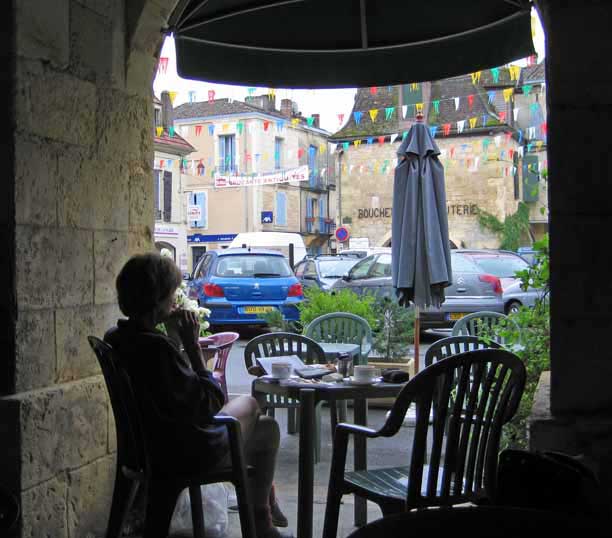
We had the most delicious croissants, light as a feather and full of butter, with our coffee, and when it suddenly poured with rain we were snug at our table between the great legs of the arcade.
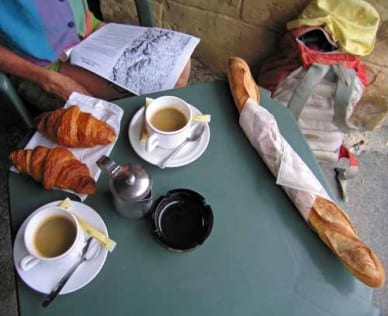
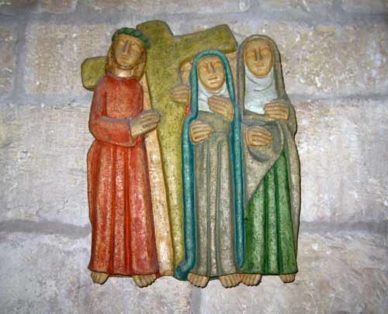
Before we left town, we bought some provisions for lunch and went into the church, which was built originally as part of the defensive wall. Inside the church were a series of charming painted bas-reliefs of the stations of the cross.
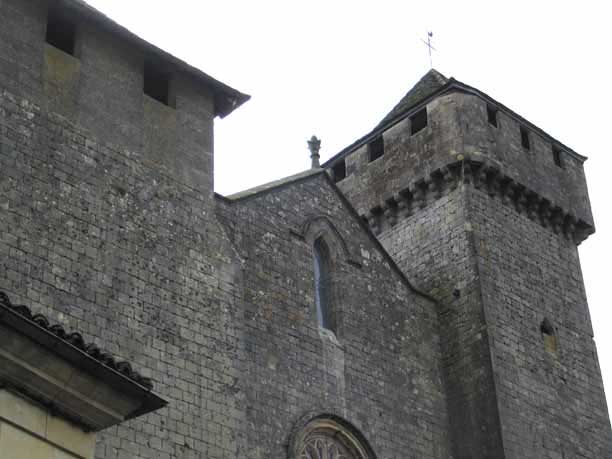
Although it is not now on any of the four main pilgrim routes, Beaumont was much visited in the twelfth and thirteenth centuries, as pilgrims streamed across France any way they could, heading for the passes over the Pyrenées at Roncevalles or Somport, and ultimately to Compostela.
The convent, decorated with cockle shells (the pilgrim’s sign), bears witness to this.
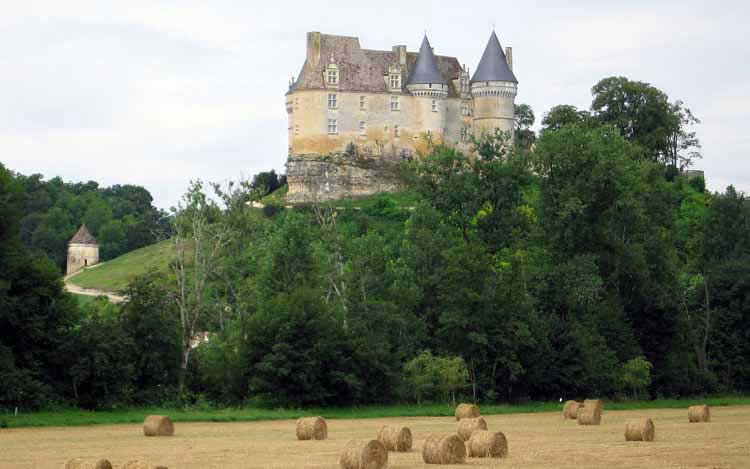
During the Hundred Years War, the bastide of Beaumont, like Montpazier but unlike Villefranche-du-Périgord, was English.
With renewed vigour we took to the road again, following the river Couze on its journey to the Dordogne.
We soon came to a wonderful château, the château of Bannes, bristling with towers on a rocky knoll. It seemed to have drawn up the honey colour of the hay field below into its lower masonry.
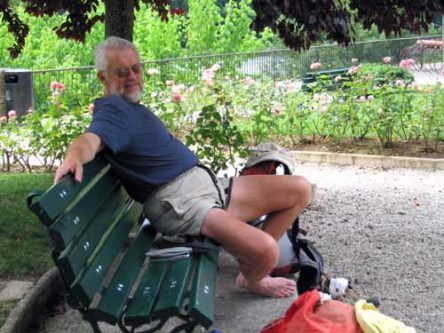
Just past Bayac we turned off the river road, through a very short tunnel, and climbed steeply to a plateau of fields and woods, then plunged equally steeply towards the Dordogne. What we lost in flatness we gained in brevity and peace – there was hardly a car the whole way.
Coming down past a house, we were accosted by a snarling dog whose owner cried weakly “Viens ici! Viens ici!”, but we had the bag of tent poles and righteous indignation on our side, and the dog scuttled off.
At river level, the left bank of the Dordogne was thickly forested and uninhabited. As we walked, we looked for a camping ground across the water, but there was none, and we crossed the old stone bridge to enter Lalinde, the village we had visited two years ago.
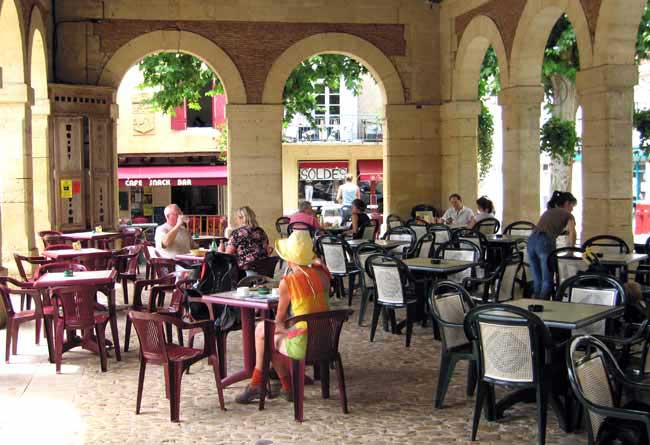
The Office of Tourism was just opening after lunch (it was 1:40 pm), so we got a town plan and the information that the nearest camping ground was upstream a kilometre or two. This was the one we had seen when we came down from Trémolat.
For lunch we sat in the small park beside the Office of Tourism, close to the bridge, with a fine clear fountain splashing into a pool and roses in full bloom.
Then we moved a couple of streets to the central square of the bastide, like Beaumont’s somewhat damaged but still delightful, and had coffee under the halle.
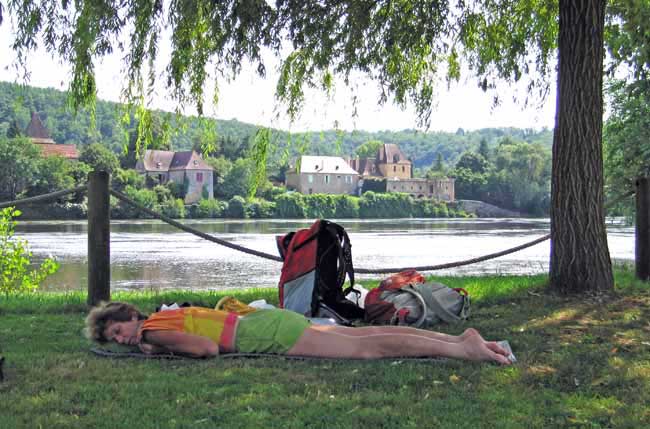
As we walked out to the camping ground along the road, we remembered, too late, the shady footpath along the canal that we had used last time.
The camping was combined with a sports centre and did not seem to have a reception area, so we marched in and chose a spot on the riverbank, with thick, yielding turf and a willow tree.
The showers were of the old push-button variety in which the temperature cannot be adjusted. These ones started off lukewarm and gradually heated up until they were scorching, and we had to skip in and out to wash ourselves.
I was getting very worried about my sandals. The soles were so thin that I could feel the ground through them. On the way back to Lalinde I walked on the grassy edge, rather than on the canal path itself (which was gravel), to avoid breaking this delicate membrane.
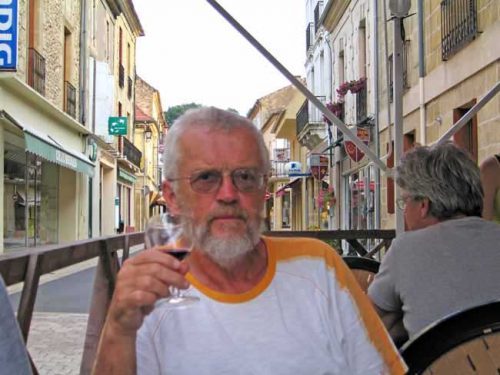
At the boat harbour we crossed the canal on a humpback bridge and set about looking for a place to eat. The first thing we found was a Logis de France hotel with a terrace looking out on the harbour, but it seemed expensive and was quite empty.
We ended up round the corner in a sort of wooden pen jutting out into the lane. Only the first five or six couples got seats in this area, later arrivals having to go indoors. Once again the evening was warm. The waitress convinced us to get a special salad to share for our first course.
It was monumental, with a vast array of vegetables and a topping of hot goat’s cheese on toast. Then Keith had pasta carbonara and I had a steak, by which time we were so full that Keith had to give up his planned research for his thesis on crèmes brûlées, and we were glad to have a fairly long way to walk home.
Previous day: Puy l’Évêque to Montpazier